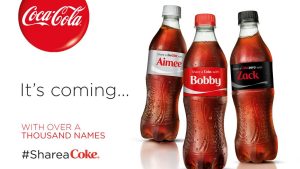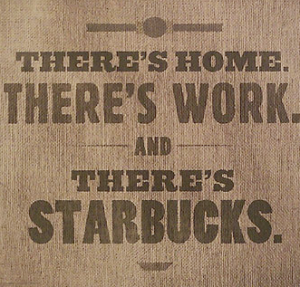Have you ever found yourself tearing up over a commercial, only to wonder why you’re getting emotional over a car ad? They are emotions in advertisiting where the goal isn’t just to sell you a product, but to tug at your heartstrings or give you a good laugh in the process. This isn’t just about ads; it’s about creating moments that stick with you long after the TV is off or the magazine is closed. Lets take a look at how emotions in advertising are used to connect with us, the customers. It’s like they have a map of our hearts and know exactly where to poke. We’ll explore why a puppy in an ad can make us feel warm and fuzzy about a brand, or how a bit of humor can make a product memorable (because who doesn’t love a good laugh while watching a toilet cleaner commercial?).
We’re not just looking at the ‘how’ but also the ‘why’. Why do certain emotions make us want to buy something? And hey, is it okay for brands to play with our feelings like a cat with a ball of yarn? We’ll also peek into the future – will we see more virtual reality ads making us feel like we’re part of a story?
So, buckle up (emotionally, of course) as we take this ride through the ups and downs of emotional advertising. It’s going to be informative, a bit fun, and who knows, you might just end up seeing ads in a whole new light.
Understanding Emotions in Advertising
Alright, let’s get into the nitty-gritty of emotions in advertising. It’s like trying to understand why we cry at movies – except this time, it’s about why we get a sudden urge to buy a new pair of sneakers after watching a commercial.
Why Emotions? First up, why do advertisers even bother with emotions? Well, it turns out we humans are not as logical as we like to think. We’re driven by feelings. A good ad doesn’t just show us a product; it makes us feel something. It’s like that friend who tells you a story and suddenly, you’re all in, forgetting it’s just a story. Advertisers aim to do the same thing – they want their product to be that friend. Emotions in advertising – after all, are crucial.
 Happy Ads, Sad Ads, and Everything In-Between: Different emotions in advertising serve different purposes. A happy, upbeat ad with dancing and catchy music (think of those soda commercials) might lift your spirits, creating a positive association with the brand. On the other hand, a heart-warming ad with a touching story (cue the holiday commercials with the perfect family scenes) might make you feel all fuzzy and warm inside. And let’s not forget the ads that scare the living daylights out of us into buying insurance. Each emotion has its own ticket to our brain’s decision-making party.
Happy Ads, Sad Ads, and Everything In-Between: Different emotions in advertising serve different purposes. A happy, upbeat ad with dancing and catchy music (think of those soda commercials) might lift your spirits, creating a positive association with the brand. On the other hand, a heart-warming ad with a touching story (cue the holiday commercials with the perfect family scenes) might make you feel all fuzzy and warm inside. And let’s not forget the ads that scare the living daylights out of us into buying insurance. Each emotion has its own ticket to our brain’s decision-making party.
Case in Point: The Laughing Strategy: Humor is a biggie. Ever laughed at a commercial and then found yourself quoting it later? That’s no accident. Funny ads stick. They break the ice and make brands seem more human, less like a corporate machine. It’s like being at a party – you’re more likely to remember the person who made you laugh than the one who gave a lecture on the economic impact of socks getting lost in the laundry.
Emotional Branding: The Sticky Part: This brings us to emotional branding. Ever wonder why you’re loyal to a certain brand, even if it’s pricier? That’s emotional branding at work. It’s not just about a product; it’s about how the brand makes you feel. It’s like choosing a favorite coffee shop not because the coffee is out of this world, but because the cozy ambiance and the barista’s jokes make your day.
The Emotional Rollercoaster: A Summary: So, as we’ve seen, emotions in advertising are like a rollercoaster – they take us on a ride, and we end up where the advertisers want us: connected to their brand. Whether it’s through laughter, tears, or a heart-pounding moment of fear, these emotions make ads more than just a sales pitch; they make them a memorable experience.
Strategies for Emotional Advertising
Let’s dive into the toolbox of emotional advertising. Think of it as a chef’s secret ingredients – each technique adds a unique flavor to the ad, making it something you can’t forget.
Storytelling: More Than Just Once Upon a Time Remember that ad where the little kid dresses up as a superhero, only to find out the real hero is his dad? That’s storytelling. It’s not just about telling a tale; it’s about creating a narrative that we can see ourselves in. Storytelling in ads is like a mini-movie that takes us on a journey, and before we know it, we’re emotionally invested. It’s powerful because it’s relatable. We see a bit of ourselves in those stories, and that connection is gold for advertisers.
Visual Imagery: A Picture is Worth a Thousand Words (and Maybe a Thousand Sales) You’ve heard it before, but in advertising, it’s king. Visual imagery can evoke emotions instantly. Take the classic Nike ads – the swoosh, the athletes in action. You see it, and you feel the rush, the aspiration. It’s like looking at a picture of a sunset and feeling peaceful; advertisers use imagery to create those same instant emotional connections.
Music: The Unsung Hero of Emotions in Advertising” Ever noticed how an ad with the right background music can change your entire mood? Music in advertising is a mood-setter. It’s like when you hear a sad song and suddenly remember every sad moment in your life. Advertisers use music to enhance the emotional tone of the ad. A peppy tune for a fun, energetic product, or a soft melody for something more serene – the music aligns with the emotion they want you to feel.
Case Studies: Lessons from the Emotion Masters
 Coca-Cola: “Share a Coke” Campaign: This was genius. By personalizing bottles with names, Coca-Cola created a sense of personal connection. It wasn’t just a soda; it was a soda with your name on it. The campaign evoked feelings of friendship and belonging – powerful emotions that go beyond just quenching thirst.
Coca-Cola: “Share a Coke” Campaign: This was genius. By personalizing bottles with names, Coca-Cola created a sense of personal connection. It wasn’t just a soda; it was a soda with your name on it. The campaign evoked feelings of friendship and belonging – powerful emotions that go beyond just quenching thirst. Google: “Loretta”: Remember the Google ad where an elderly man uses Google Assistant to keep his wife’s memory alive? It pulled at the heartstrings, evoking emotions of love and nostalgia. This ad wasn’t about showcasing a product’s features; it was about connecting the product to the deep, emotional human experience of memory and loss.
Google: “Loretta”: Remember the Google ad where an elderly man uses Google Assistant to keep his wife’s memory alive? It pulled at the heartstrings, evoking emotions of love and nostalgia. This ad wasn’t about showcasing a product’s features; it was about connecting the product to the deep, emotional human experience of memory and loss.- Dove: “Real Beauty Sketches”: Dove took a different route, focusing on self-esteem and the perception of beauty. By showing women they are more beautiful than they think, Dove connected on an emotional level that went beyond just selling soap. It was about changing perceptions and empowering their audience.
Emotions and Products: A Match Made in Marketing Heaven Different emotions cater to different products. A luxury car ad might evoke feelings of success and prestige, while a charity ad might aim for empathy and compassion. It’s about matching the emotion with the product’s personality. You wouldn’t use humor in a life insurance ad, right? It’s all about finding the right emotional angle that resonates with the product and the audience.
The Emotional Advertising Recipe: Emotional advertising is a mix of storytelling, visual imagery, and music – all blended to create a memorable and emotive experience. These techniques, when used smartly, can turn a simple product into a story, a memory, a feeling. It’s not just about what’s being sold; it’s about how it makes us feel. And in the end, that feeling is what sticks with us, long after the ad has ended.
Emotional Branding: The Heart of the Matter
Moving seamlessly from the techniques of emotional advertising, let’s delve into the world of emotional branding. It’s like the next step in a relationship – you’ve had the first date (the ad), and now you’re building a long-term connection (the brand). Emotional branding isn’t just about making sales; it’s about creating a bond, a kind of friendship, between the brand and the customer.
The Essence of Emotional Branding: Imagine emotional branding as the secret sauce that gives a brand its unique flavor. It’s what makes you reach for a Coke over another soda, or choose Nike sneakers even if they’re a bit pricier. It goes beyond the product; it’s about how the brand makes you feel. Do you feel adventurous, safe, sophisticated, or maybe even a bit rebellious? That’s emotional branding at work. It’s the brand telling you a story where you’re the hero, and the product is your trusty sidekick. (Also read: Emotional Intelligence )
Building Brand Loyalty: More Than Just Repeat Business When a brand consistently evokes positive emotions, it starts to build loyalty. Think about Apple. People don’t just buy Apple products; they join the Apple ‘community’. It’s like being part of a club. Apple has successfully created a sense of belonging and innovation around its brand. That’s emotional branding – it’s not just about the product’s features; it’s about how owning that product makes you feel. You’re not just buying a phone; you’re buying into an idea, a lifestyle.
Examples of Emotional Branding Champions
- Nike: Just Do It: Nike’s not just selling shoes or sportswear; they’re selling inspiration. The ‘Just Do It’ slogan is a call to action, an encouragement to push your limits. Nike’s branding makes you feel like an athlete, regardless of your skill level. They’re selling the emotion of triumph and perseverance.
 Starbucks: The Third Place: Starbucks has positioned itself as the ‘third place’ – a comfortable spot between home and work. It’s not just about the coffee; it’s about the experience. The cozy ambiance, the personalized cups – they’re selling a moment of relaxation, a break from the hustle and bustle.
Starbucks: The Third Place: Starbucks has positioned itself as the ‘third place’ – a comfortable spot between home and work. It’s not just about the coffee; it’s about the experience. The cozy ambiance, the personalized cups – they’re selling a moment of relaxation, a break from the hustle and bustle.- Harley-Davidson: More Than a Motorcycle: For Harley-Davidson, it’s about freedom, rebellion, and a sense of adventure. Owning a Harley isn’t just about having a motorcycle; it’s about being part of a culture, a lifestyle that speaks to freedom on the open road.
The Subtle Art of Emotional Connection What these brands have mastered is the art of creating an emotional connection. It’s like they’re whispering in your ear, “I get you.” And once that connection is established, it’s powerful. It’s no longer just about what the product does; it’s about how the product is an extension of who you are or who you aspire to be.
Emotional Branding, The Emotional Bond Emotional branding is the deep, ongoing relationship between a brand and its customers. It’s about connecting on a level that goes beyond the product. It’s about tapping into the human experience and becoming a part of the customer’s identity. This connection is what turns a first-time buyer into a lifelong customer. It’s not just business; it’s emotional.
The Impact of Emotions on Consumer Decision Making
Now, let’s get down to the crux of the matter: how do all these emotional whirlwinds actually influence what we buy? It’s one thing to feel all warm and fuzzy inside after watching an ad, but it’s another thing entirely to actually whip out your wallet. This is where the real magic of emotional advertising and branding comes into play.
Emotional Advertising: The Decision-Maker’s Nudge Imagine you’re in the supermarket aisle, deciding between two brands of cereal. One is the brand from that ad where the kid and her dad are having a blast at breakfast. The other is just… cereal. Which one are you more likely to pick? That’s emotional advertising at work. It nudges your decision-making process, often without you even realizing it. The emotions evoked by the ad create a subconscious preference, tilting the scales in favor of the brand that made you feel something special.
Real-Life Examples: The Proof is in the Purchasing
- John Lewis Christmas Ads: Take the annual John Lewis Christmas ads in the UK. They’ve become almost a cultural event. Each ad, rich in emotion and storytelling, has consistently driven an increase in sales during the holiday season. People don’t just see an ad; they experience a story that makes the John Lewis brand synonymous with the warmth and joy of Christmas.
- Always’ “#LikeAGirl” Campaign: This campaign changed the conversation around what it means to do something “like a girl”. It struck a chord, particularly with women, for its empowering message. The result? A significant boost in Always’ brand perception and, you guessed it, sales figures.
Emotions: The Architects of Brand Perception and Trust Emotions don’t just push us towards a purchase; they shape how we see the brand. A brand that makes us feel good, safe, or empowered is a brand we’re likely to trust. This trust is the foundation of brand loyalty. For example, Patagonia’s commitment to sustainability and environmental responsibility has fostered a strong emotional connection with its customers, who not only trust the brand but also feel good about purchasing its products.
The Subconscious Influence: We Feel, Therefore We Buy The truth is, a lot of our purchasing decisions are made subconsciously. An emotional ad might not lead to an immediate purchase, but it plants a seed. Next time you’re making a buying decision, that seed can sprout into a preference, all because of an emotional connection you might not even remember forming.
The Emotional Domino Effect in Purchasing Emotions in advertising and branding are like dominoes. An emotional ad leads to a positive brand perception, which builds trust, which then influences our purchasing decisions. It’s a subtle, yet incredibly powerful, chain reaction that starts with a simple emotion.
Ethical Considerations: Walking the Fine Line in Emotional Advertising
Now, let’s talk ethics – because let’s face it, playing with emotions can feel a bit like walking a tightrope over a pool of sharks. It’s tricky. On one hand, emotional advertising is about connecting with people; on the other hand, nobody wants to feel like they’re being emotionally manipulated by a puppet master with a sales agenda.
The Ethics of Tugging at Heartstrings First off, there’s a fine line between evoking emotions and exploiting them. It’s like being that friend who knows exactly what to say to cheer you up, versus the friend who always plays on your fears to get you to do what they want. Ethical advertising respects the audience’s emotions. It doesn’t trick them into feeling scared or inadequate just to sell a product. Think about it – making someone feel bad about themselves to sell a skincare product? That’s a no-go zone.
Real World Example: Dove’s Real Beauty Campaign Remember Dove’s “Real Beauty Sketches”? It was praised for promoting self-esteem, a positive approach in an industry often criticized for unrealistic beauty standards. This campaign walked the ethical line well, using emotional appeal to empower rather than to exploit.
The Responsibility of Emotional Honesty Honesty is key in ethical emotional advertising. It’s not just about showing happy people enjoying a product; it’s about ensuring that the emotional message aligns with the product’s true nature and the company’s values. Misleading people with exaggerated emotional promises can backfire. If a brand is all about joy and positivity in their ads, but their customer service is as friendly as a grumpy cat, that’s an emotional trust breach.
Balancing Act: Emotion vs. Manipulation So, how do brands balance effective emotional appeal with ethical responsibility? It’s about being mindful of the impact. Good emotional advertising leaves you feeling better, not worse. It’s like a good comedian who makes you laugh with them, not at someone else. Brands should aim to uplift, not to press on pain points just to make a sale.
The Ethical Emotional Compass: In the world of emotional advertising, ethics play a crucial role. It’s about striking a balance – connecting with the audience in a way that’s genuine, respectful, and honest. After all, the best relationships, even those between brands and consumers, are built on trust, not trickery.
The Role of Technology in Enhancing Emotional Engagement
As we step into the future of advertising, let’s not forget our trusty sidekick: technology. It’s like the wizard behind the curtain, giving ads that extra oomph in emotional engagement. From AI to VR, technology is changing the game, making ads not just something you watch but something you experience.
AI: The Smart Emotion Detector AI in advertising is like having a mind reader in your pocket. It can analyze data to predict what kind of emotional appeal will work best for different audiences. For example, Spotify’s algorithm doesn’t just suggest songs; it curates playlists based on your mood. It’s like having a DJ who knows exactly what you want to hear when you’re feeling blue or ready to party. This personalized approach makes the emotional connection with the brand stronger and more relevant.
VR: Stepping Into the Ad Virtual Reality takes emotional engagement to a whole new level. It’s no longer about watching a story; it’s about being part of it. Take, for instance, the VR campaign by charity organization, Charity: Water. They used VR to transport people to a village in Ethiopia to witness the impact of clean water. This immersive experience created a powerful emotional connection, turning viewers into donors. It’s one thing to see a problem; it’s another to ‘experience’ it.
Augmented Reality: Bringing Ads to Life Augmented Reality (AR) is like the cool cousin of VR. It layers digital information onto the real world, making ads interactive and, dare we say, fun. IKEA’s AR app, for example, lets you see how furniture would look in your home before you buy it. It’s like playing a home decorating game, but in real life. This interactive experience creates a positive emotional connection with the brand, as it adds value and excitement to the shopping process.
The Emotional Echo of Tech-Enhanced Ads What’s really fascinating is how these tech-enhanced ads linger in our minds. The emotional impact of a VR experience or a personalized AI recommendation doesn’t fade as quickly as a traditional ad. It’s like the difference between reading about a rollercoaster and actually riding one.
Tech, the New Emotional Conductor: Technology is not just a tool; it’s a new way to evoke and enhance emotions in advertising. From AI’s personalized touch to VR’s immersive experiences, technology is making ads more engaging, more memorable, and more emotionally impactful. It’s an exciting time for advertising, where the possibilities for emotional connection are as vast as technology itself.
The Evolving Symphony of Emotions in Advertising
As we conclude this journey through the world of emotions in advertising, it’s clear that we are witnessing an evolution, a symphony where each note – from storytelling to technology – plays a crucial role. The impact of this symphony on consumer behavior is profound and far-reaching, marking a new era in the way brands connect with their audience.
The Ever-Changing Landscape of Emotional Connection The landscape of advertising is not what it used to be. Gone are the days of simple product pitches. Today, it’s about creating narratives, experiences, and emotions that resonate on a deeper level. As we’ve seen, storytelling, visual imagery, and music are more than just tools; they’re the lifeblood of effective advertising, creating memorable and emotionally charged messages that stick with us long after the ad has ended.
Emotional Branding: The New Loyalty Language The concept of emotional branding has redefined the relationship between brands and consumers. Brands like Nike, Starbucks, and Apple have shown us that it’s not just about selling a product; it’s about selling a feeling, a lifestyle, an identity. This approach has led to a new kind of brand loyalty, one that’s based on emotional bonds rather than just transactional relationships. It’s a loyalty that’s earned by understanding and resonating with the consumer’s deepest emotional needs and aspirations.
The Ethical Compass and Consumer Trust As we’ve delved into the ethical considerations, it’s clear that with great power comes great responsibility. The ability to evoke emotions can be a double-edged sword. Ethical advertising respects and uplifts, rather than exploits and manipulates. It’s about striking a delicate balance between effective emotional appeal and maintaining the consumer’s trust. Brands that navigate this balance well are the ones that build lasting relationships with their audience.
The Digital Dawn: AI, VR, and AR The introduction of AI, VR, and AR has opened new frontiers in advertising. These technologies have not just enhanced the way we experience ads; they’ve transformed them into interactive, personalized, and immersive experiences. As these technologies continue to evolve, they will further redefine the landscape of emotional advertising, offering even more innovative ways to create meaningful connections with consumers.
Looking Ahead: The Future of Emotional Advertising As we look to the future, it’s clear that the role of emotions in advertising will only grow in significance. The challenge for brands will be to keep adapting and innovating in the way they use emotional appeal, ensuring they remain relevant and genuine in the eyes of an ever-more discerning audience. The brands that succeed will be those that understand that emotional advertising is not just about the immediate reaction it elicits, but about the long-term emotional journey it creates with the consumer.
In essence, the evolving role of emotions in advertising reflects a broader shift in our cultural and social landscape – one where empathy, connection, and authenticity are valued more than ever. As consumers, we are not just passive recipients of advertising; we are active participants in an emotional dialogue with brands. And as this dialogue continues to evolve, so too will the fascinating and ever-changing world of advertising.
